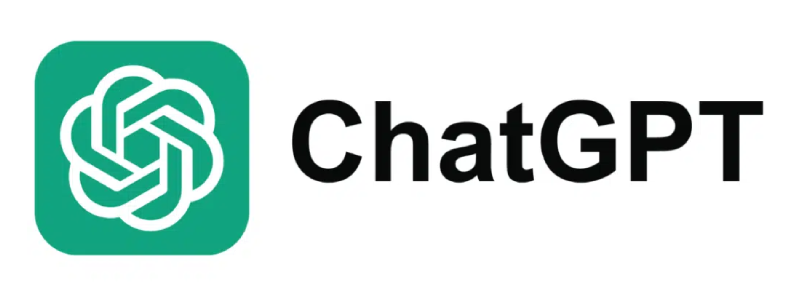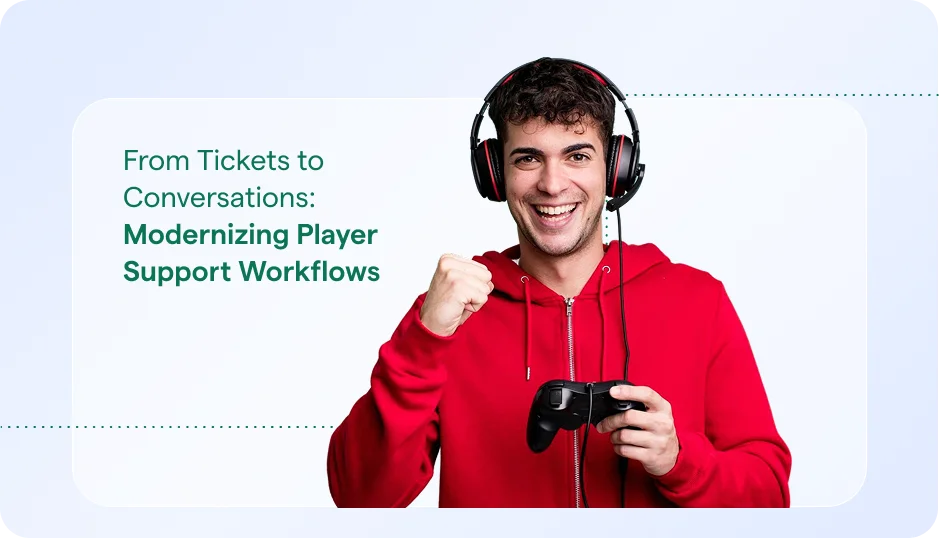Gaming companies that implement in-game support see dramatic improvements in customer satisfaction. Here’s how three companies doubled their CSAT scores and what you can learn from their success.
Picture this: A player is deep in a critical raid, leading their guild through the final boss battle. Suddenly, a payment issue locks their premium items. In traditional support scenarios, they’d need to:
- Exit the game completely
- Navigate to a separate support website
- Fill out lengthy forms without game context
- Wait hours or days for email responses
- Miss the raid entirely
By the time support resolves the issue, the player’s frustration has compounded. Their guild is disappointed, and their satisfaction with your game has plummeted. This scenario plays out millions of times daily across the gaming industry, contributing to the 23% of players who abandon games after just one poor support experience.
The solution? In-game support that preserves the gaming experience while solving problems instantly.
Why Traditional Support Fails Gaming Companies
When players encounter issues—whether it’s account lockouts, missing rewards, or technical glitches—they’re forced to abandon their gaming session and navigate to external platforms like email, web forms, or phone support. This disruption in player’s immersive experience is where the friction begins.
The response time crisis is perhaps the most critical failure of traditional support. Major gaming platforms like Steam, Ubisoft, and Roblox often take 24-48 hours to respond to support tickets, with some users reporting delays of several days or even weeks
Account-related problems have become the dominant support issue, representing 27.5% of all gaming support contacts according to recent data. These problems are particularly time-sensitive as it results in players locked out from accessing their games entirely. And as frustration mounts, players permanently abandon the game.
Thirdly, games operate 24/7 across all time zones, but most support teams don’t. Players in different regions often face support gaps during their peak gaming hours. A player in Asia experiencing issues at midnight may have to wait until the next business day in another time zone to receive any assistance. This creates an inherently unfair support experience based on geographic location.
Key Components of Gaming Support
Effective in-game support transforms these challenges into opportunities through several core components:
1. Seamless Integration
Native in-app messaging allows players to get help without leaving their game environment. The support interface can be customized to match your game’s aesthetic, maintaining immersion while providing assistance.
2. Real-time Assistance
AI-powered chatbots provide instant responses to common queries, while human agents handle complex issues through live chat. This ensures 24/7 availability across all time zones where your players are active.
3. Rich Context and Media
Players can share screenshots, videos, and game logs directly within the support conversation. This visual context dramatically reduces the back-and-forth typically required to understand and resolve gaming issues.
4. Multilingual Capabilities
AI-driven translation enables support in players’ native languages, breaking down barriers for global gaming communities.
Case Study 1: Jam City Doubles CSAT with In-game Excellence
Jam City, the powerhouse behind Cookie Jam, Panda Pop, and Harry Potter: Hogwarts Mystery, faced a scaling challenge that many growing gaming companies encounter. With 700+ employees across five countries and millions of global players, their traditional support system couldn’t keep pace with player expectations.
Players were frustrated with:
– Slow response times
– Need to leave games for support
– Stagnating CSAT scores as ticket volumes increased
The company partnered with Helpshift to implement a comprehensive in-game support strategy that would transform their entire customer experience approach. They deployed self-service help articles embedded directly within games, enabling players to find answers without interrupting gameplay.
Native messaging allowed players to contact support without leaving the game environment, while AI-powered deflection through smart routing and automation handled routine inquiries instantly.
The transformation was nothing short of dramatic:
– Customer satisfaction scores doubled – a 100% increase in CSAT that represents one of the most significant improvements in the gaming industry.
– The in-game knowledge base achieved a 90% ticket deflection rate, meaning 9 out of 10 players found answers without needing agent assistance.
– Ticket volume decreased by 30%, freeing agents to focus on complex, high-value interactions that truly required human expertise.
Perhaps most importantly, Helpshift’s unified dashboard enabled Jam City to leverage customer feedback for product development, transforming customer service from a cost center into a business driver. Real-time analytics and reporting enabled continuous optimization that kept satisfaction scores climbing.
Case Study 2: AIDIS Achieves 96% Automation Success
Working with Helpshift, they implemented a mobile-first support strategy that would prove transformative.
Their implementation focused on meeting players where they already were – within the mobile game itself. And as a result:
– An impressive 93% of inquiries came through the in-app SDK, ensuring players could get help directly within the mobile game without interrupting their experience.
– 60% automation achieved in the first three months
– 96% automation rate within a year
– 90% FAQ deflection rate through intelligent content recommendations
Players experienced stress-free issue resolution without interrupting gameplay, while automated handling of routine issues meant instant responses for common problems. This allowed human experts to dedicate their time to complex, high-value interactions that truly required human empathy and creative problem-solving skills.
Here are the key lessons from AIDIS’s:
– Starting automation with high-volume
– Low-complexity issues to build confidence
– Implementing gradual rollouts to ensure smooth transitions without overwhelming players or agents
– Maintaining the human touch for complex problems that require empathy and creative solutions
Case Study 3: SYBO Games Streamlines Operations
SYBO, creators of the globally beloved Subway Surfers, needed a solution that could handle their massive international player base efficiently while maintaining high satisfaction scores. Their success story illustrates the operational benefits that extend beyond just customer satisfaction metrics.
“Partnering with an all-in-one solution with combined expertise in both personnel and tools offers significant benefits. It streamlines operations by eliminating the need to coordinate with multiple vendors, ensuring consistency across platforms, and reducing overall costs,” explains Vlad Oboronko, SYBO’s Player Support Lead.
The key insight from SYBO’s transformation centers on operational efficiency gained through integrated solutions.
Rather than managing multiple vendors and platforms – each with different interfaces, reporting systems, and integration challenges – they could focus their energy on optimizing the player experience through unified workflows and automation strategies.
The Science Behind CSAT Improvement
Psychological Factors
Flow State Preservation: Gaming researchers have long studied the concept of “flow state” – the immersive experience where players lose track of time and become fully engaged. Traditional support breaks this flow, creating frustration that extends beyond the immediate issue. In-game support preserves flow state, keeping players engaged and satisfied.
Immediate Gratification: Gaming conditions players to expect immediate feedback and responses. In-game support aligns with these expectations, providing instant acknowledgment and rapid resolution that feels natural within the gaming context.
Control Perception: When players can access help without leaving their familiar gaming environment, they maintain a sense of control and agency. This psychological comfort significantly impacts satisfaction scores.
Technical Advantages
Context Retention: In-app messaging allows agents to see exactly what the player is experiencing – their current game state, recent actions, technical environment, and progression status. This rich context dramatically reduces resolution time and improves first-contact resolution rates.
Rich Media Support: Gaming issues are often visual. Players can instantly share screenshots of bugs, record videos of gameplay problems, or attach game logs that provide technical details. This visual communication eliminates the frustration of trying to describe complex issues through text alone.
Proactive Intervention: Advanced AI and automation can detect potential issues before they become player complaints, offering proactive assistance that prevents frustration entirely.
Implementation Framework: Your Path to Higher CSAT
Phase 1: Foundation (Weeks 1-4)
Assess Current State: Measure baseline CSAT scores and identify the most common player pain points. Use your existing analytics and reporting to understand where players are getting stuck.
Technical Planning: Evaluate your current tech stack and plan the SDK integration that will enable seamless in-game support.
Phase 2: Core Implementation (Weeks 5-12)
Deploy In-app Messaging: Integrate native chat functionality that matches your game’s design and user experience.
Build Knowledge Base: Create comprehensive self-service content covering your most common player issues, optimized for mobile consumption.
Train AI Systems: Configure AI chatbots to handle routine queries like account recovery, payment questions, and basic gameplay help.
Phase 3: Advanced Features (Weeks 13-24)
Enable Rich Media: Allow players to share screenshots and videos for visual problem-solving.
Add Multilingual Support: Implement AI-driven translations to serve your global player base.
Advanced Analytics: Deploy comprehensive tracking to measure CSAT improvements and identify optimization opportunities.
Phase 4: Continuous Optimization
Data-Driven Refinements: Use real-time feedback to continuously improve your support experience.
Agent Training: Develop expertise in human-AI collaboration to maximize efficiency and satisfaction.
Business Intelligence: Transform support data into insights that drive game development and business decisions.
Measuring Success: CSAT Metrics That Matter
Primary Metrics
- Overall CSAT Score: Track player satisfaction ratings over time
- First Contact Resolution: Measure how often issues are resolved in a single interaction
- Response Time: Monitor speed of initial support response
- Resolution Time: Track total time from issue report to resolution
Advanced Analytics
- Sentiment Analysis: Use AI to track emotional tone in player interactions
- Issue Pattern Recognition: Identify recurring problems for proactive prevention
- Cross-Game Insights: Learn from support patterns across your game portfolio
The Future of Gaming Support
The gaming industry is rapidly evolving, and support expectations are evolving with it. Companies that implement in-game support today position themselves for the future trends that will define customer experience:
AI Evolution: Next-generation AI will provide even more contextual, intelligent assistance that feels natural within gaming environments.
Predictive Support: Advanced analytics will enable support systems to identify and resolve potential issues before players even encounter them.
Immersive Integration: As AR and VR gaming grows, support experiences will become even more seamlessly integrated into immersive gaming worlds.
Your Next Steps
The evidence is clear: in-game support dramatically improves CSAT scores while reducing operational costs. Companies like Jam City have doubled their satisfaction scores, while AIDIS achieved 96% automation success. The question isn’t whether in-game support works – it’s how quickly you can implement it to gain competitive advantage.
Start with an Assessment: Evaluate your current CSAT scores and identify the biggest pain points in your player support experience.
Plan Your Implementation: Use the framework above to develop a phased approach that minimizes disruption while maximizing impact.
Partner with Experts: Consider working with experienced in-game support providers who understand the unique challenges of gaming customer service.
The gaming companies that thrive in the coming years will be those that recognize customer support as a competitive differentiator, not just a cost center. By implementing in-game support that preserves the magic circle while solving problems instantly, you can join the ranks of companies seeing 100% CSAT improvements.
Ready to transform your gaming customer experience? Discover how Helpshift can help you achieve similar results for your games and players.
Want to learn more about gaming customer service best practices? Explore our customer success stories or contact our gaming support experts for a personalized consultation.








